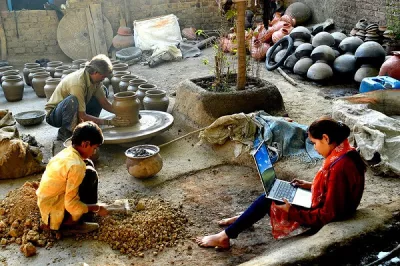How Absa Bank Empowered its Customers through Games
Commercial banks serve poor and low-income customers largely through transactional and savings accounts. This customer is always keenly interested in their balance, as any overspend brings penalties and embarrassment. Many poor customers find it so onerous and expensive to use their accounts, that they withdraw all the money once a month, and uses cash rather than the account.
Absa, a South African bank majority-owned by Barclays, wrestled with this and other issues regularly. The bank routinely experienced a weekend- and month-end crunch in their banking halls, when low-income customers came to the branch to inquire about balances and do their banking. This happened despite the fact that for customers, it can be quite expensive to get to a branch – up to $2.80 in taxi fares. In addition, Absa’s records indicated that about 50% of its low-income customers had registered for mobile banking and thus had access to their balances through their mobile devices. Despite this service, usage was low – only about 20% of those registered used their accounts – and focused mostly on airtime top-ups. Even though using a mobile device to check your balance could have saved customers money and been more convenient, it was not a feature commonly used. The challenge is thus: how can you not only empower customers with the information about this functionality, but also get them to use it?

One answer was the Shesha (meaning quick-quick) Game. The Absa team conceptualized a game in the form of a quiz. The bank interacts with the customer using text messages inviting them to opt-in to play. The game had two parts: first were questions and answers that focused on checking account balances with an airtime prize rewarding good answers. The second part of the game challenged the customer to test the newfound knowledge by checking the account balance on their phone. The reward that incentivized this activity was entry into a draw for a large cash prize.
What was the result? Most calls for action via SMS functionality for similar efforts result in action by about two percent of those invited. In this instance, 14% of customers invited played the game. The balance check activity of participants in the game increased from 0 percent before the start of the game to 54% two months after completing the game, and 61% six months after playing the game. An initial assessment is that the investment in the game platform, the prices and other costs, can be covered by the amount saved by not having to reconfigure branches to accommodate the end-of-month crunch.
By having customers answer questions and perform an activity, they increase their awareness and confidence. By providing relevant information, Absa engages with customers in a different manner to build loyalty and trust. Absa essentially gamified the activity to facilitate “learning by doing”. Such an approach can help build trust and confidence through a more interactive relationship between Absa and its customers. This can lead to more empowered customers that make informed choices, use services that are of value to them and to have greater control over their financial lives. The Shesha Game is a small activity in a chain of interaction but it creates a touch point and opportunity for the bank and customer to engage with each other in an innovative way that can strengthen their relationship.



Add new comment